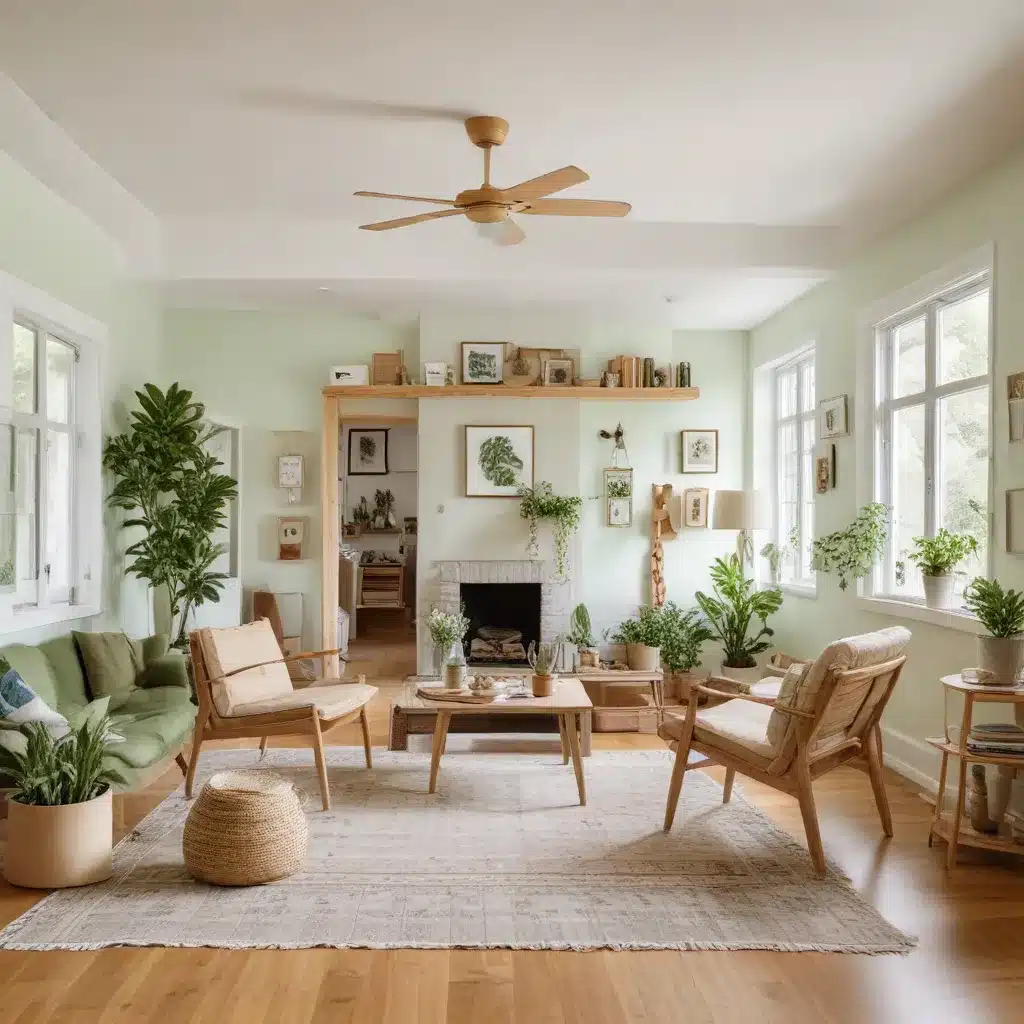
Sustainable Renovations for an Eco-Conscious Lifestyle
As a seasoned construction professional and interior designer, I’m excited to share my insights on creating eco-friendly home makeovers that not only revitalize your living spaces but also contribute to a greener future. In this comprehensive guide, we’ll explore practical tips, innovative design ideas, and cutting-edge sustainable practices to help you transform your home into a haven of environmental consciousness.
Decluttering and Repurposing for a Minimalist Approach
The first step towards an eco-friendly home makeover is to declutter and assess the items in your space. Get rid of any unused, duplicated, or outdated tools, supplies, and materials. Be ruthless in your purge, as this will not only create more breathing room but also reduce the overall waste and energy consumption associated with maintaining unnecessary items.
Once you’ve cleared the clutter, consider repurposing and upcycling existing furnishings and decor. A little creativity can breathe new life into old pieces, reducing the need for brand-new purchases. For example, you could transform a worn-out dresser into a stylish media console or convert an unused armchair into a cozy reading nook.
Embracing Natural Light and Energy-Efficient Lighting
One of the most impactful upgrades you can make is to maximize the use of natural light in your home. Start by ensuring your windows are clean and unobstructed, allowing the sun’s rays to flood your living spaces. Consider installing larger windows or French doors to increase natural illumination. Strategically placed mirrors can also help reflect and amplify the natural light throughout the room.
When it comes to artificial lighting, opt for energy-efficient LED bulbs, which consume up to 80% less energy than traditional incandescent bulbs. Dimmable LED lights allow you to further reduce energy usage by adjusting the brightness as needed. Motion sensors and timers can also help automate your lighting, ensuring that lights are turned off when not in use.
Eco-Friendly Flooring and Insulation
The choice of flooring materials can have a significant impact on the sustainability of your home. Explore options like bamboo, cork, or reclaimed hardwood, which are renewable and biodegradable. These materials not only add natural beauty but also contribute to a healthier indoor environment by reducing the release of harmful volatile organic compounds (VOCs).
Proper insulation is another critical aspect of an eco-friendly home makeover. Sealing air leaks and upgrading your insulation can significantly improve energy efficiency, keeping your home warm in the winter and cool in the summer. Look into options like blown-in cellulose, spray foam, or recycled denim insulation, which offer excellent thermal performance while reducing your carbon footprint.
Sustainable Appliances and Energy-Efficient Systems
When it comes to home appliances, choose Energy Star-certified models that consume less energy and water, reducing your utility bills and environmental impact. Consider investing in energy-efficient heating and cooling systems, such as heat pumps or high-efficiency furnaces and air conditioners, to further optimize your home’s energy usage.
For hot water needs, explore alternative options like solar thermal systems or tankless water heaters, which can provide significant energy savings compared to traditional tank-style water heaters. These upgrades not only lower your carbon footprint but also contribute to long-term cost savings.
Sustainable and Ethical Material Choices
In your home makeover, be mindful of the materials you select, opting for those that are sustainably sourced, recyclable, and biodegradable. Avoid synthetic materials like vinyl or polyester, which can release harmful chemicals and microplastics into the environment. Instead, choose natural fabrics like organic cotton, linen, or bamboo, which are not only eco-friendly but also better for your indoor air quality.
When it comes to paints and finishes, select low-VOC or no-VOC options, which emit fewer harmful volatile organic compounds. These eco-friendly paints and stains not only protect the environment but also contribute to a healthier living space.
Cultivating an Eco-Friendly Outdoor Space
Your home’s exterior and outdoor areas present opportunities to further enhance your eco-friendly living. Consider incorporating native, drought-resistant plants that require less water and maintenance. Embrace permeable surfaces, such as gravel or permeable pavers, to reduce stormwater runoff and promote natural groundwater recharge.
If you have the space, consider adding a vegetable or herb garden, which can provide fresh, local produce while reducing the environmental impact of transport and packaging. Composting food scraps and yard waste can also help reduce landfill waste and nourish your garden’s soil.
Fostering a Sustainable Mindset
Ultimately, creating an eco-friendly home makeover is not just about the physical changes you make, but also about cultivating a sustainable mindset. Encourage your family to adopt eco-conscious habits, such as turning off lights and electronics when not in use, reducing water consumption, and minimizing waste.
Educate yourself and your loved ones on the importance of sustainable living, and inspire them to make informed choices that positively impact the environment. By leading by example and making gradual, mindful changes, you can create a ripple effect that extends beyond your own home and contributes to a greener future for all.
Remember, the journey towards an eco-friendly home is an ongoing process, and every small step you take makes a difference. Embrace the challenge, unleash your creativity, and enjoy the rewarding experience of transforming your living space into a sustainable sanctuary.
For more inspiration and guidance on your eco-friendly home makeover, be sure to visit https://localbuilderlondon.co.uk/, where you’ll find a wealth of resources and expert advice to help you on your journey towards a greener, more sustainable lifestyle.


